Australian landmarks are pretty spectacular. From the iconic Great Barrier Reef and Uluru to the lesser-known Wilpena Pound, many hold the title of the world’s longest, biggest, or oldest of their type.
If you are after jaw-dropping beauty, you cannot beat the diverse natural landscapes you get Down Under. Many are also at the heart of Australian indigenous culture.
Great Barrier Reef
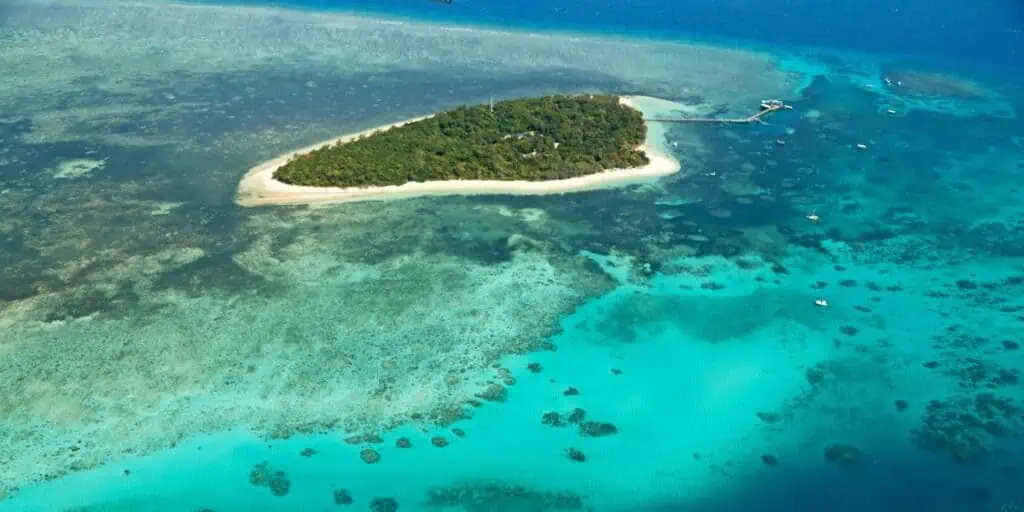
The Great Barrier Reef is visible from outer space and is half the size of Texas. It has 3000 individual reefs, 1600 types of fish, and 600 forms of coral. Stretching 1500 miles down the Queensland coast, the Great Barrier Reef is the ultimate Australian landmark and a must-see when you get to Australia.
The north Queensland town of Cairns is the most popular base for trips to the Great Barrier Reef. You can cruise to reef-fringed tropical islands or venture to the outer reef. At either, you can snorkel or dive with colorful fish, turtles, manta rays, and reef sharks.
While facing challenges due to climate change, the Great Barrier Reef is still a mesmerizingly beautiful jewel in any list of Australian landmarks.
Ningaloo Reef
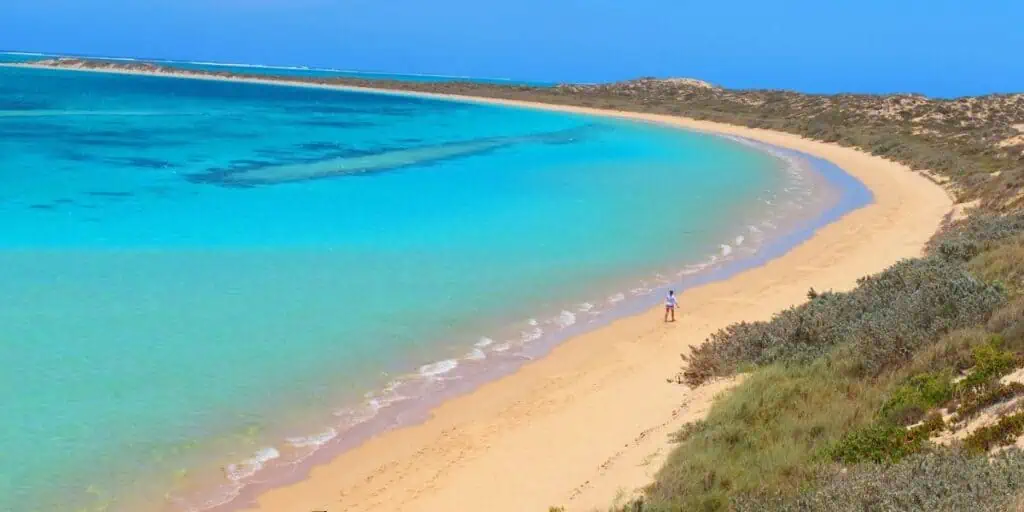
Having the largest coral reef in the world would be enough. But not for Australia. On the opposite coast to the Great Barrier Reef, you find Ningaloo Reef. It is the longest fringing reef in the world. The World Heritage Listed Ningaloo Reef runs for 160 miles along the aptly named Coral Coast between the west coast towns of Carnarvon and Exmouth.
Ningaloo has the advantage over the Great Barrier Reef of being closer to shore. At Exmouth and Coral Bay, you can snorkel on the reef right off the beach. As well as its massive coral gardens, Ningaloo is known for its giant marine creatures like whale sharks, humpback whales, dugongs, manta rays, and sea turtles. Going on a tour to swim with them is a bucket list experience.
Uluru
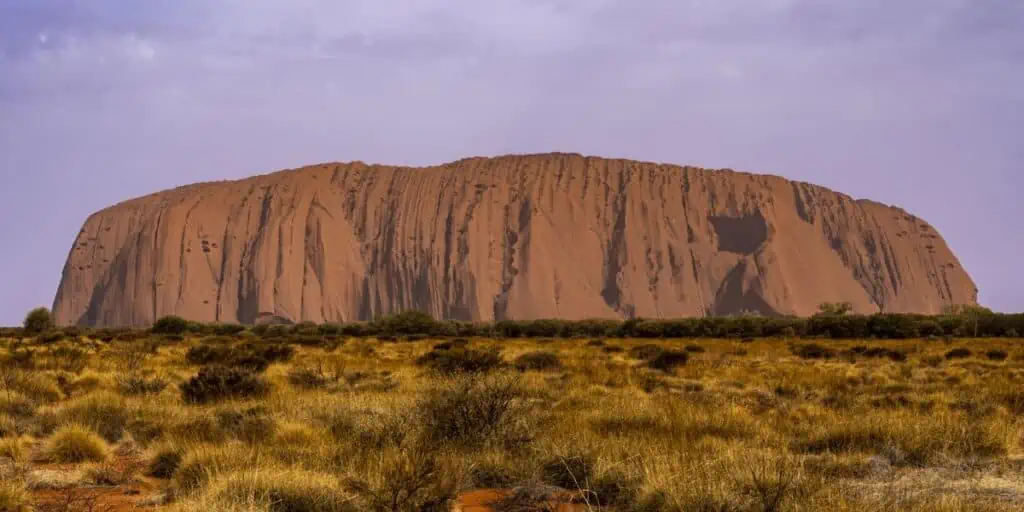
The 1200-foot tall monolith Uluru, or Ayres Rock, dominates the arid Central Australian landscape. Remarkably, only 15% of this sandstone iceberg is visible. Most of its bulk extends into the earth. Visitors can walk, fly, and even Segway around it. Watching the dawn and dusk Field of Light display with Uluru in the background is a peaceful and beautiful way to appreciate this Australian landmark.
Kata Tjuta
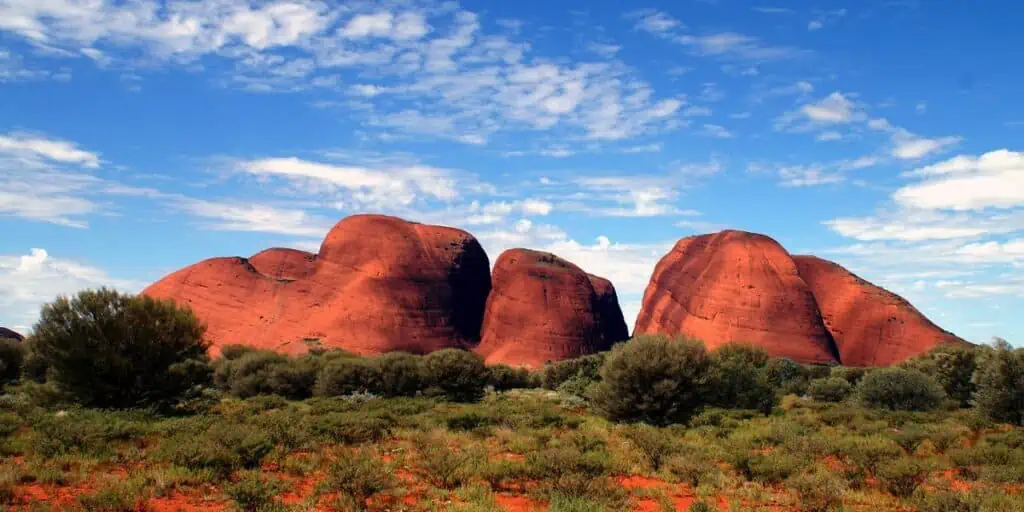
Less than 45 minutes from Uluru, Kata Tjuta, once known as the Olgas, is a significant site for the local Anagu aboriginal people. Often rated more highly than Uluru, Kata Tjuta has 36 giant rock domes, the tallest over 1500 feet high. It is a stunning landscape. The Valley of the Winds walk is the perfect way to see it.
Kakadu National Park
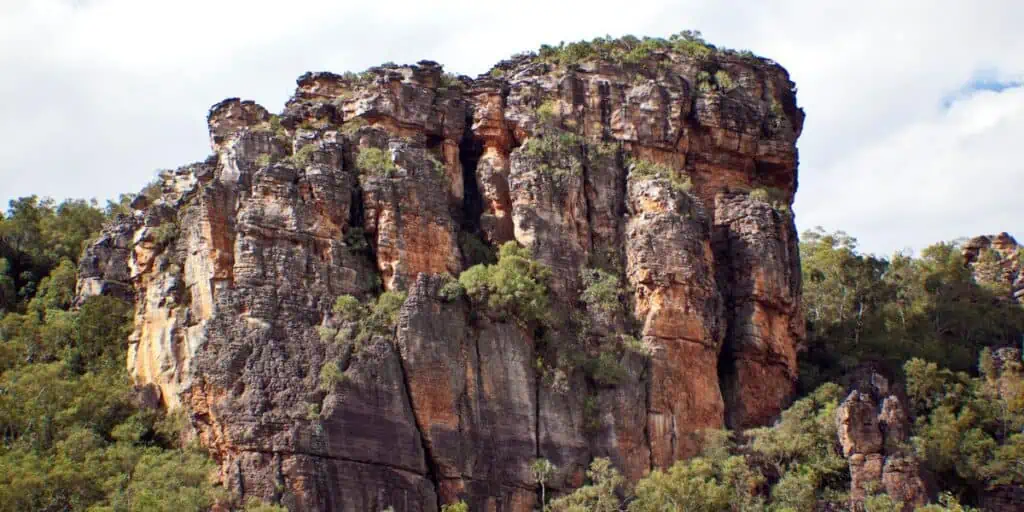
To start a debate in Australia, go on your favorite social media channel and ask which Northern Territory National Park is better – Litchfield or Kakadu.
Both are incredible natural landmarks in the Top End of Australia. To be diplomatic, both get a mention here. Kakadu is more remote and features wetlands like the crocodile-infested Yellow Water Billabong, majestic Jim Jim, Twin Falls, and significant indigenous rock art.
Litchfield National Park
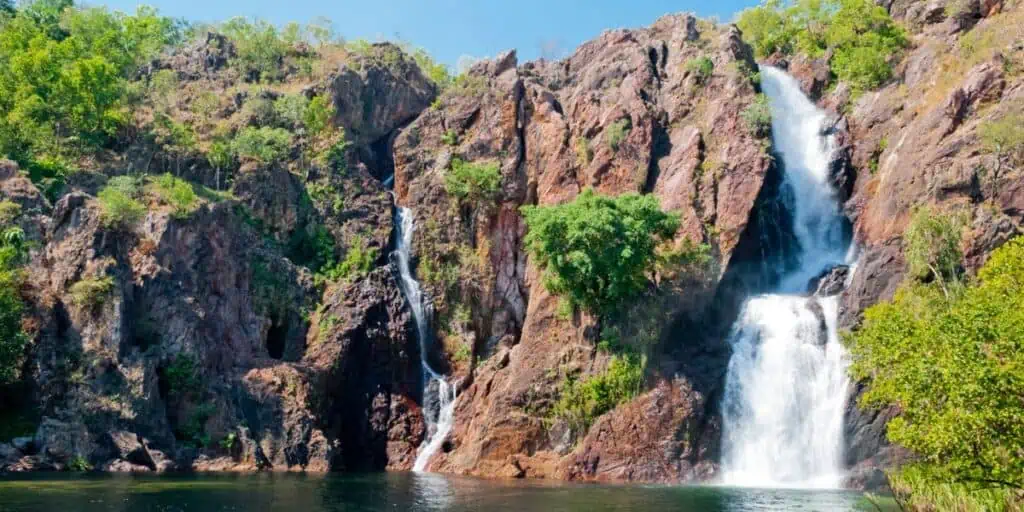
Litchfield National Park is a more leisurely day trip from Darwin. It is famous for its beautiful waterfalls and swimming holes. Wangi Falls, Florence Falls, and Buley Rockhole all have crystal clear, crocodile-free water. There are walks through the monsoon rainforest and termite mound-studded savannah bushland. Whichever of these tropical natural landmarks you see in the Northern Territory, you will not be disappointed.
Franklin-Gordon Wild Rivers National Park
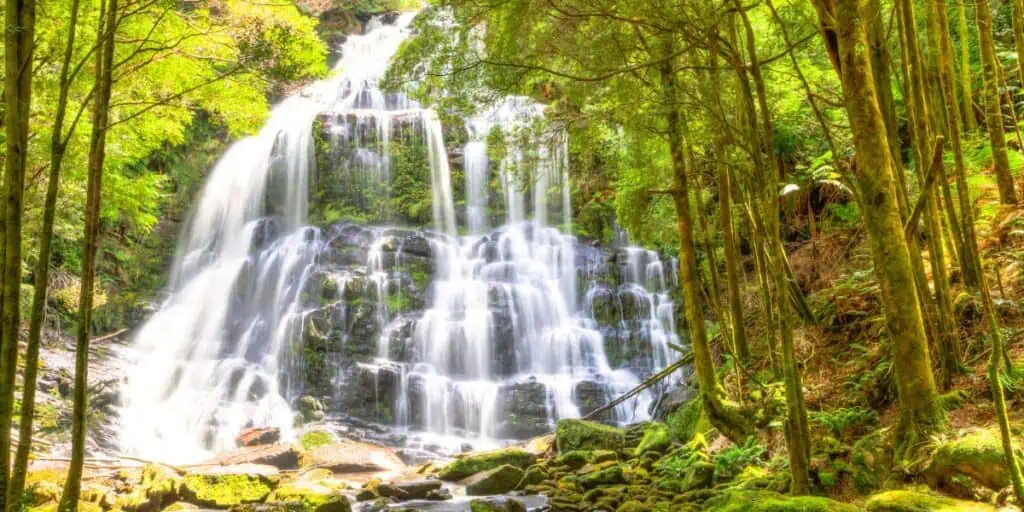
You could make a case for the southern island state of Tasmania to be considered an Australian landmark.
Over 40% of Tasmania is a national park or reserve. Everywhere you look is a natural feature of breathtaking beauty. The 1000-foot-high dolomite cliffs on the Tasman Peninsula. Freycinet National Park’s jagged granite peaks and crescent-shaped Wineglass Bay. However, let’s start with Franklin Gordon Wild Rivers National Park on the west coast of Tasmania.
The tannin-stained Franklin and Gordon Rivers that run between mountains blanketed in ancient temperate rainforests are a wild and pristine natural landmark. Walking trails through the forest and cruises on the dark, mirror-like Gordon River from Strahan is the perfect way to explore what is possibly the last great Australian wilderness area.
Bungle Bungle Ranges
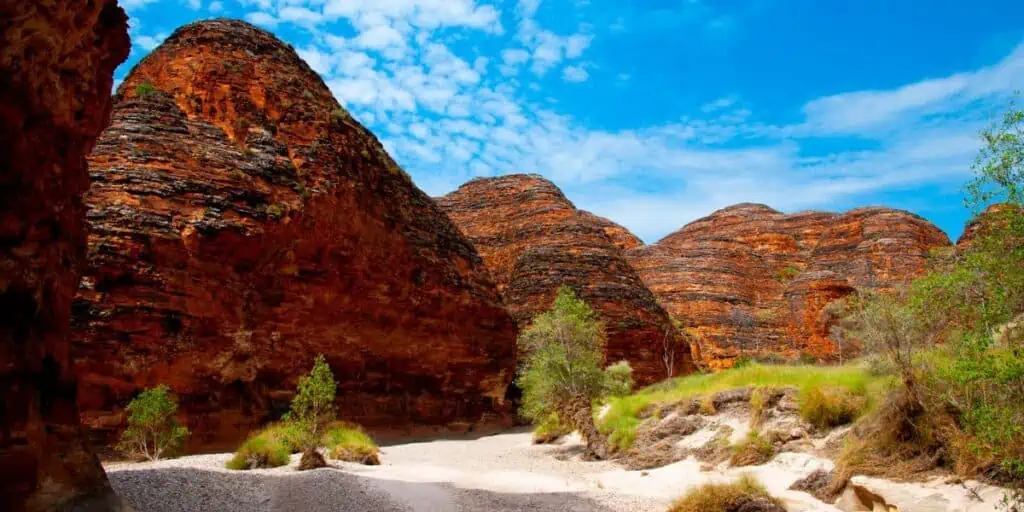
It is a testament to the size of Australia that this natural landmark remained largely unknown to European settlers until as late as 1983. The remarkable black and orange striped domes of the Bungle Bungle Ranges, or Purnululu, cover an area of 900 square miles.
They are in the far northwest of Western Australia. The closest town is Kununurra, which offers scenic flights over the domes. You can also explore the domes on foot to see the natural amphitheater at Cathedral Gorge and Echidna Chasm. Rich in wildlife and ancient plant species, touring the Bungle Bungles with an indigenous guide is an unforgettable experience.
Blue Mountains
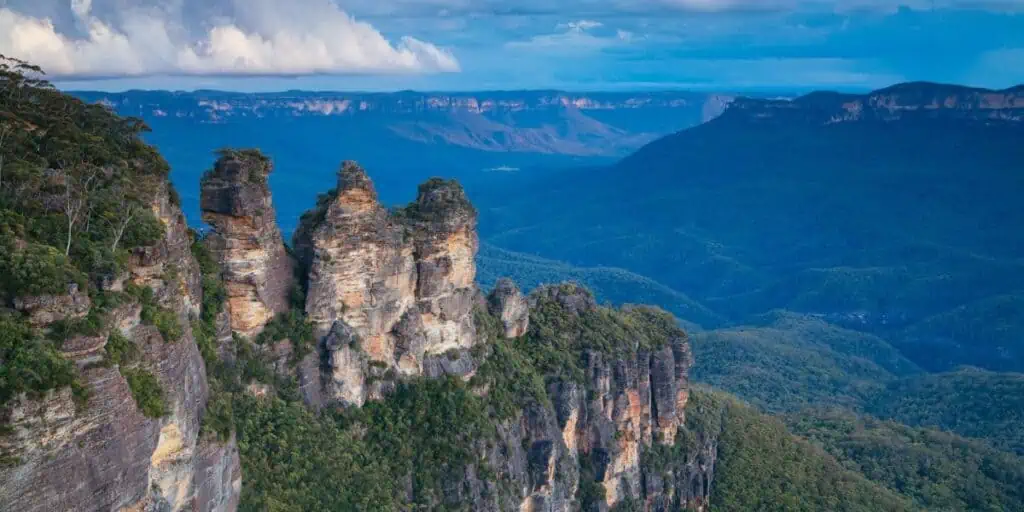
The Blue Mountains are one of Australia’s most famous natural landmarks, two hours west of Sydney. They are part of the Great Dividing Range, a series of mountains and plateaus that run along the east coast of Australia. It is the third-longest mountain range in the world. The Blue Mountains get their name from the blue-tinged air created by a reaction between Eucalyptus oil, water vapor, and sunlight.
Natural landmarks in the Blue Mountains for your itinerary are the sandstone outcrops known as the Three Sisters, Katoomba Falls, and the views from Echo Point Lookout and Govetts Leap. Cable cars take you into dinosaur-era rainforests, and you can take the world’s steepest train ride to the floor of Jamieson Valley. The Blue Mountains are an easy day trip from Sydney, or base yourself in Katoomba or neighboring villages for an extended stay.
Bunda Cliffs on the Great Australian Bight
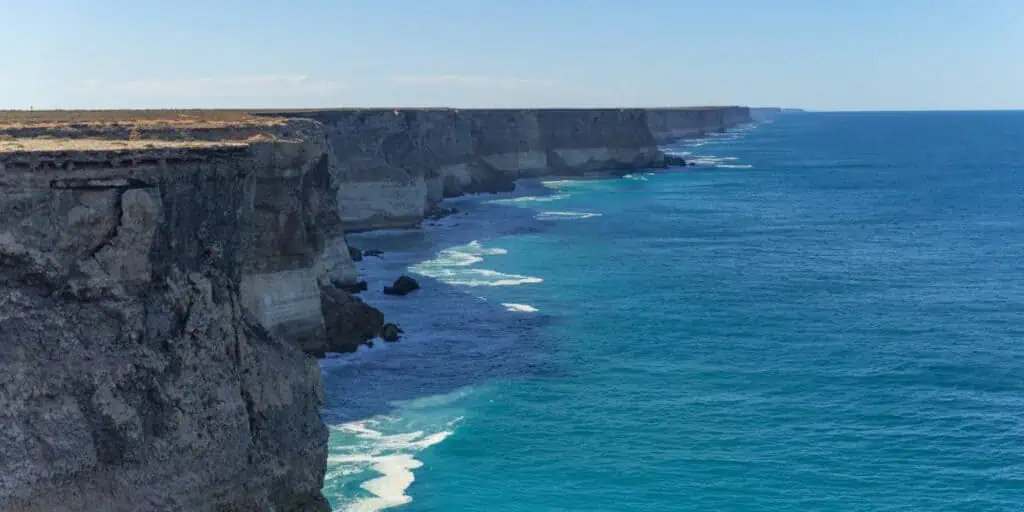
Stretching for 700 miles along the south coast of Australia is the Nullarbor Plain, a tract of land so desolate early explorers described it as ‘a hideous anomaly’. The eye-popping, neck-straining horizons here can be quite confronting for anyone unaccustomed to wide open spaces.
The Bunda Cliffs extend up to 400 feet above the Southern Ocean along the coast of the Nullarbor Plain. As if looking at the line of cliffs disappearing into the distance is not breathtaking enough, it is also one of the best places for whale watching in Australia. Each winter, hundreds of mothers and calves seek shelter at the base of the cliffs. The Head of the Bight Lookout on the Nullarbor Plain is a great place to see both attractions.
Twelve Apostles – Great Ocean Road
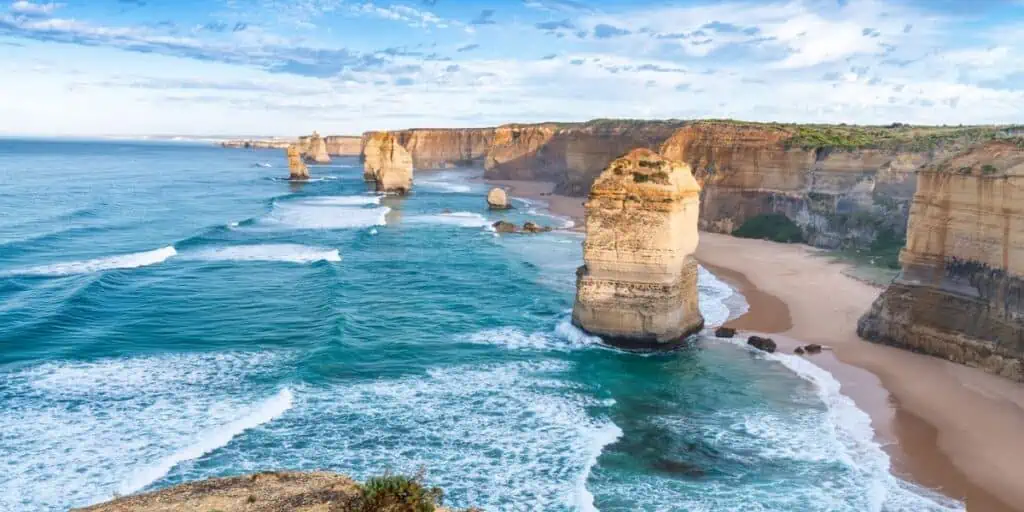
One of the best-known natural landmarks in southern Australia is the pillars of coastal sandstone known as The Twelve Apostles. Sadly, time has not been kind to the Twelve Apostles, once the main feature of the Great Ocean Road in Victoria. Thanks to relentless wave action, only eight remain. While The Eight Apostles might not have the same ring, the remaining Apostles are still an impressive sight.
However, there is more to the Great Ocean Road than the thinning Apostles. This stretch of coastline has several other impressive features carved by the wind and water. Loch Ard Gorge and The Grotto are dramatic sites as good as the remaining Apostles. This celebrated Australian road also has some lovely waterfalls. Hopetoun Falls and Erskine Falls are amongst the best.
Blue Lake – Mount Gambier
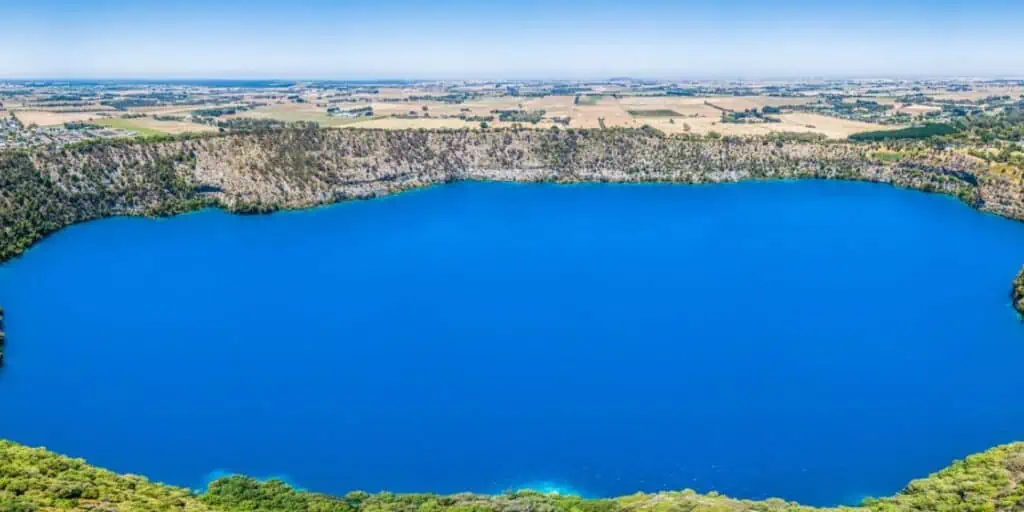
If you list the most volcanic places on earth, Australia would not be on it. However, there is a patch of Australia between Adelaide and Melbourne where the cones and craters of up to 400 volcanoes lie dormant across the landscape. One of the most spectacular is Mount Gambier’s Blue Lake, a water-filled crater in southeast South Australia.
As the water warms, calcium carbonate crystals react with the sunlight each summer. The result is a lake of iridescent blue water, which is so bright it looks anything but natural – but it is. It is an incredible sight. If you do a summer road trip between Adelaide and Melbourne, it is a must-see natural landmark.
Wilpena Pound – Flinders Ranges
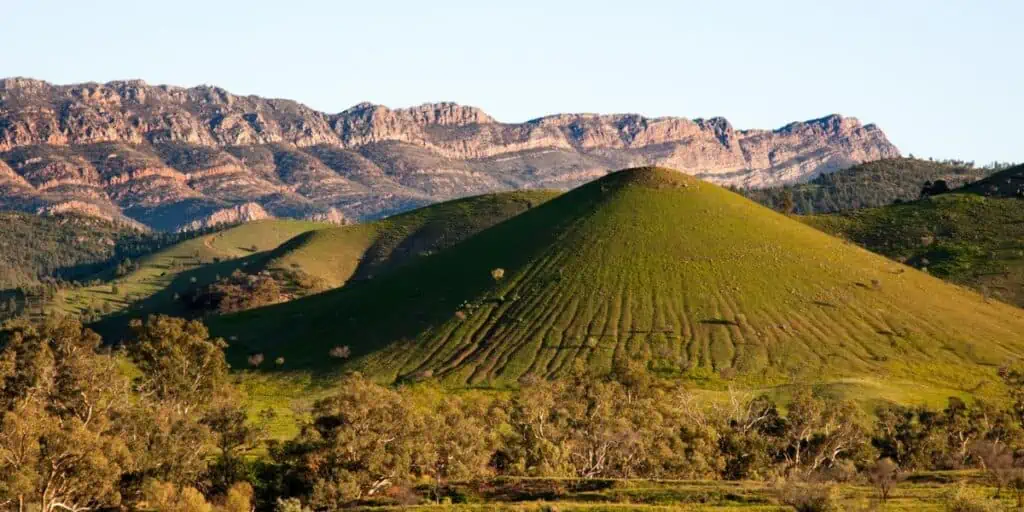
This oddly shaped range in the heart of South Australia’s Flinders Ranges has been described as a meteor crater, bowl-shaped mountain, and (if you are a geologist) a remnant elevated synclinal basin. No matter its name, the 10-mile long, 5-mile wide, and 4000-foot high oval range is an unusual and less well-known Australian landmark.
Just one of a dozen ancient, spectacular ranges in the South Australian outback, Wilpena Pound is rich in indigenous culture and a haven for wildlife like the rare yellow-footed rock wallaby. A scenic flight or helicopter ride over the pound is an unforgettable experience. You can also hike to St. Mary’s Peak, the range’s highest point.
Kings Canyon

If you are in Central Australia to see Uluru, Kings Canyon is another natural landmark to add to your list. The best way to appreciate it is on the 4-mile Kings Canyon Rim Walk. At sunrise, you walk up 500 steps to the top of the canyon. The dawn light changes the rocky landscape from hews of purple to orange and red.
Once you recover from the ascent, you can explore the beehive domes of the Lost City and the Garden of Eden, a cycad-lined waterhole. A suspension bridge and lookouts let you peer 1000 feet below the canyon floor. It is one of the most spectacular natural landmarks in outback Australia.
The Pinnacles
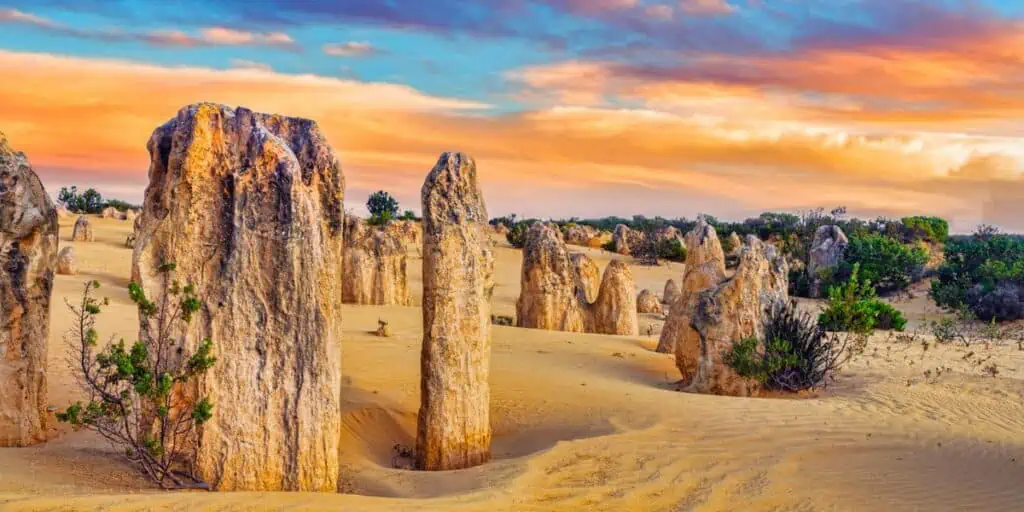
The Pinnacles is a haunting Australian landmark in Nambung National Park, two hours north of Perth. Hundreds of limestone pillars up to 15 feet tall cover the yellow sand of the Pinnacles Desert. Created when the sea retreated around 30,000 years ago, how it formed is debatable. The indigenous Nyoongar people say they are the remains of young men who strayed onto the sacred ground of women.
Today, you can drive and walk through the Pinnacles. The landscape is most beautiful at dawn and dusk when the Pinnacles’ long shadows stretch across the sand, and the limestone pillars glow in the golden light. It is also the best time to see kangaroos and emus that feed on the sparse vegetation in the park. You can get to the Pinnacles on a day trip from Perth.
Cradle Mountain

With alpine moorlands, glacial lakes, and snow-capped peaks, Cradle Mountain is one of Tasmania’s and Australia’s best natural landmarks. The steep walk to Marions Lookout has stunning views of Cradle Mountain and Crater Lake. There are also short, easy walks through the mossy forests of King Billy Pines, or enjoy panoramic views on a walk around Dove Lake.
A feature of Cradle Mountain is the wildlife. Expect to see wombats, echidnas, kangaroos, wallabies, and various birds as you explore the different landscapes. A highlight of the area is the bright yellow foliage of the Fagus or native beech trees in autumn. Cradle Mountain is picture-perfect, covered in winter snow, too. You could spend several days looking around. There is plenty of cozy accommodation.
Lucky Bay
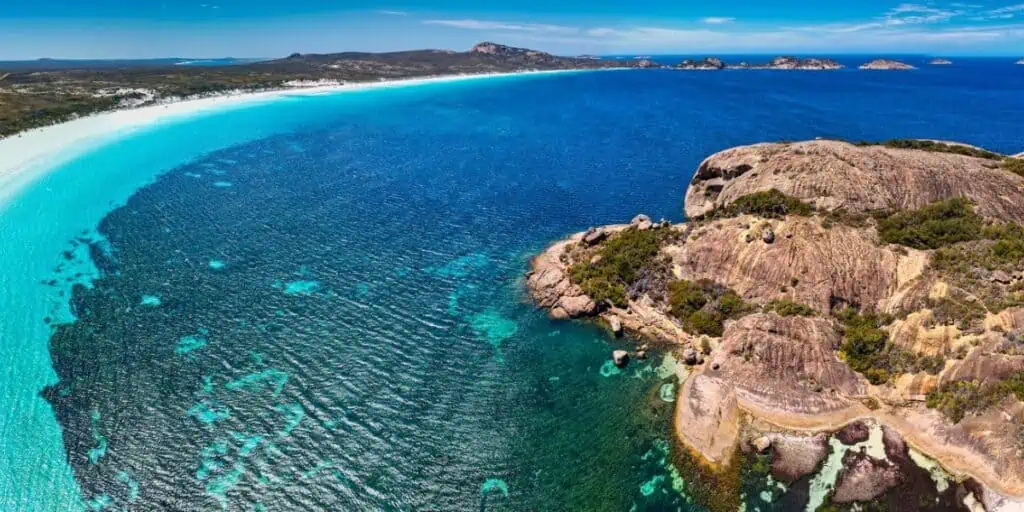
You cannot have a list of the best Australian landmarks and not include a beach. There are 12,000 of them in Australia. That is roughly one beach for every three miles of coastline. While Bondi Beach in Sydney and Cable Beach in Broome are worthy candidates, the beach with the whitest sand in the world is the number 1 pick.
That honor goes to Lucky Bay in Cape Le Grand National Park on the south coast of Western Australia. The super fine, toothpaste white sand disappears into crystal clear turquoise water. To top it off, it is not uncommon to find a mob of kangaroos relaxing on the beach during the day. First-time visitors to Lucky Bay might pinch themselves to make sure they are not dreaming. The view is unreal.
This article originally appeared on Wander With Alex. Featured Photo Credit: [@bennymarty/DepositPhotos]
ABOUT THE AUTHOR
Natalie and Steve Klein manage Curious Campers, a popular Australian travel website featuring experiences, wildlife encounters and road trips for people wanting information and inspiration while traveling Australia. You can connect with Curious Campers on their Facebook group Experience Australia.